Plaster Stabilization: When and Why It's Necessary
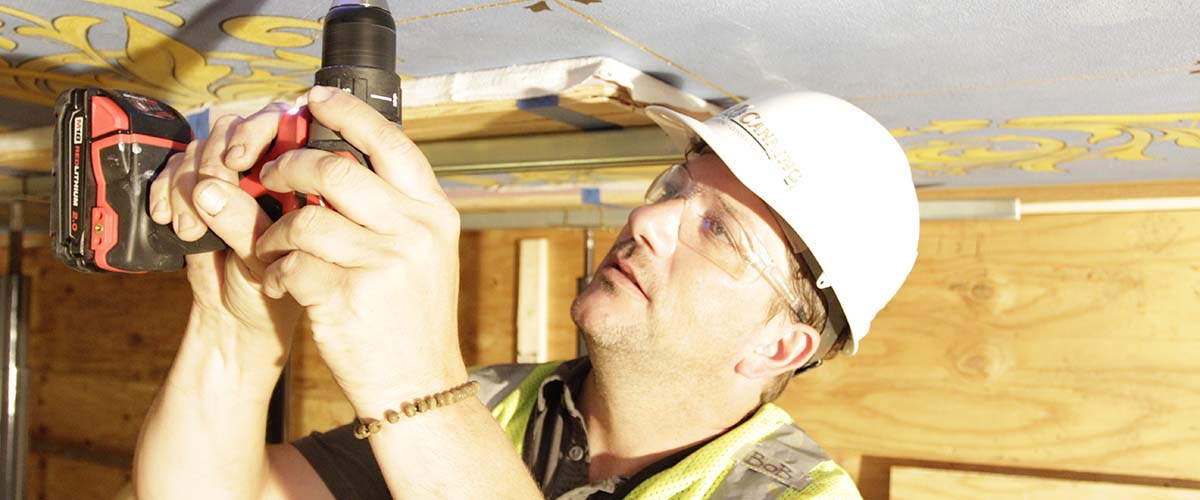

Determining whether to stabilize or replace historic plaster is not a decision to be made lightly. Historic plaster, even if well maintained, might be concealing significant internal damage. The beauty and key to the longevity of you plaster extends far beyond its primary layer. Foundation shifts, buckling lath, water damage, and uneven distribution of a building’s weight can cause repeat cracks that often extend deeper than just the plaster surface. Understanding the elements at play will help inform your decision about whether to attempt a stabilization campaign, or repair and replace plaster after mitigating extenuating circumstances.
Do-it-yourself plaster repairs or quick handyman touch-ups often result in cracks reemerging years, or even months later. If this happens it could be that the plaster was not built up correctly, but far more likely is that there are other unaddressed issues prompting the reoccurring damage. In areas where previous repairs have failed, professionals should be consulted to determine the best course of action to remediate further cracks from emerging. Load-bearing walls are more prone to cracks due to extensive displacement of a building’s load in a confined area. Situations like this require special reinforcements within a wall and careful, thoughtful plaster application. Stronger substrate and skilled layering can combat cracking. Since the load is near constant, stabilization in such a situation has a better chance of holding. Older buildings tend to sink, often resulting in plaster cracking. Without addressing the underlying foundation damage, any repairs made to plaster affected by sinking will not hold and the damage will remerge immediately. Therefore, damaged plaster in such situations should only be repaired or replaced once all factors acting on it are rectified.
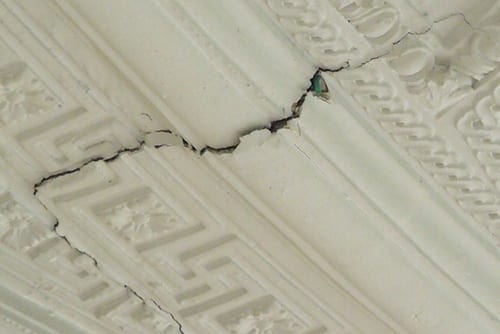

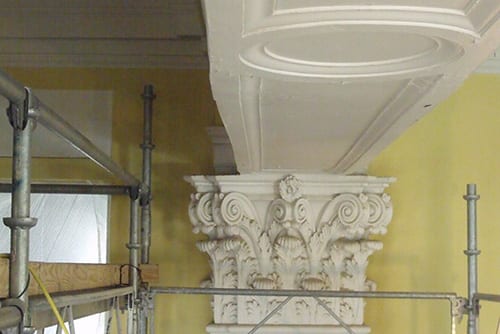

Ceiling cracks and water damage are common occurrences in older, historic buildings. As slate and wood roofs start to fail and copper flashing begins to deteriorate, the permeability of the building suddenly increases exponentially. Water will damage not only the plaster; but also, the lath and framing to which it is attached. In such a case, the first course of action is always to make the building watertight and prevent further damage: repairing the framing, lath, and plaster without first preventing water penetration will result in immediate subsequent damage. Once the necessary steps have been taken, plaster can be assessed for removal and/or stabilization. Areas with extensive damage will have to be removed but less affected areas or minimal overall damage might be able to be stabilized without extensive restoration work. This decision will have to be made by a professional, with knowledge of not only plaster repair but also the forces acting on the area.
Stabilizing or replacing plaster should be reviewed by an expert on an individual area basis. Determining the root cause of damage is an integral part of deciding whether to stabilize or replace. Certain areas are more susceptible to repeat damage and creating a preservation plan is best left to a professional with extensive experience stabilizing your type of historic plaster.
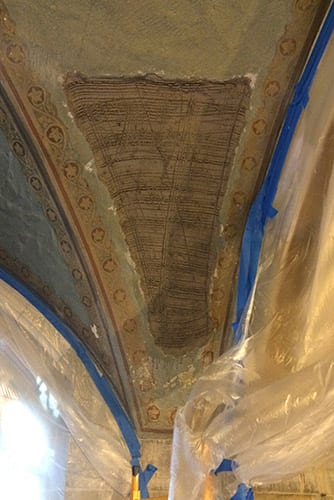

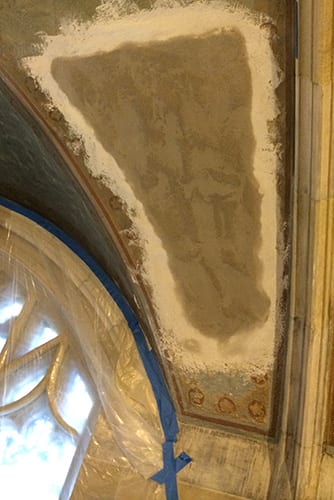

Example of Plaster Patching
If you are in need of plaster restoration or repair services, please contact Canning Liturgical Arts.
